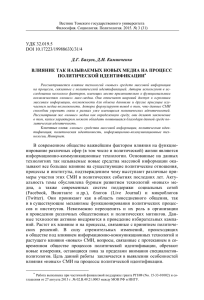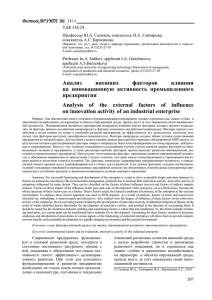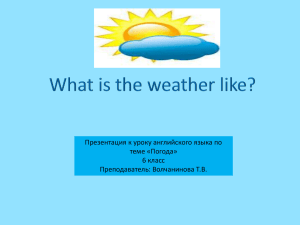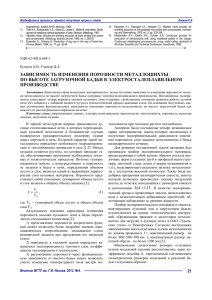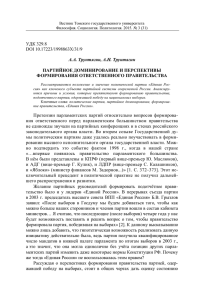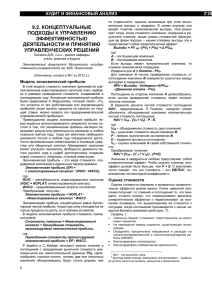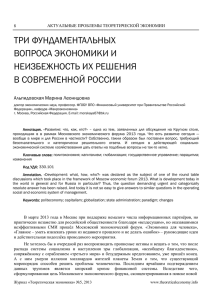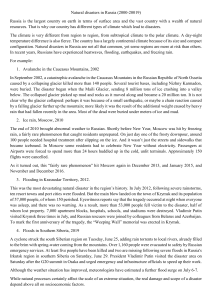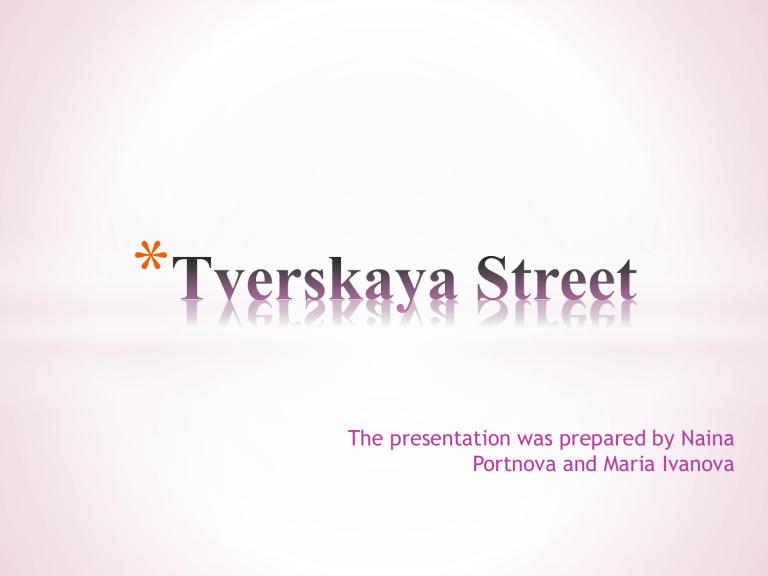
* The presentation was prepared by Nаina Portnova and Maria Ivanova * • Tverskaya Street is Moscow’s thoroughfare that joins Red Square to Triumphalnaya Square. • Tverskaya Street abounds with high-end brand boutiques and Moscow’s best restaurants. • Several 18th- and 19th-century architectural monuments have survived to our days. • Buildings such as the National Hotel, the Central Telegraph, the town residence of the Savino-Storozhevsky Monastery and the building hosting Moscow City Government deserve special attention. • The Eliseyev Food Hall, renowned for its luxurious interior decoration and rich history, is located at 14, Tverskaya Street. • Building No. 21 once accommodated the English Club, one of the most prestigious social institutions in imperial Russia, now Museum of Contemporary History of Russia. * The modern Tverskaya Street is the continuation of a road which once connected Moscow with Tver. Several monuments dating from the 19th and even the 18th centuries have survived, including the National Hotel. However, Tverskaya Street owes its modern appearance mostly to the 1930s. Before that, it had been a narrow and winding road typical of old Moscow where urban development was rarely carried out according to any cohesive plan. The street was enlarged and straightened in Soviet times, but, in order to do this, many historic buildings had to be torn down. Highly valuable architectural landmarks were preserved, but hidden inside residential neighbourhoods. Multistorey buildings could move with people inside, and the relocation was so smooth that some people kept sleeping without even noticing it. Building No. 14 on the right side of Tverskaya Street (the former tenement house by E. Kozitskaya) is famous for housing the Eliseyev Food Hall. This classical style building was initially built by Matvey Kazakov, but its appearance underwent major transformations in the subsequent years. At the end of the 19th century, merchant Grigory Eliseyev purchased it and opened a grocery store on the first floor. In Soviet times, the store was renamed for Gastronom No. 1 Building No. 17, erected by architect Arcady Mordvinov, is an excellent example of Stalinist architecture, notable for its big arch connecting Tverskaya Street with a lane, which is typical for Tverskaya Street where even small-scale crossings are beautifully decorated. The corner tower is also interesting. A statue of a ballet dancer once stood there, so the building itself was commonly known as “the house under the skirt”.
